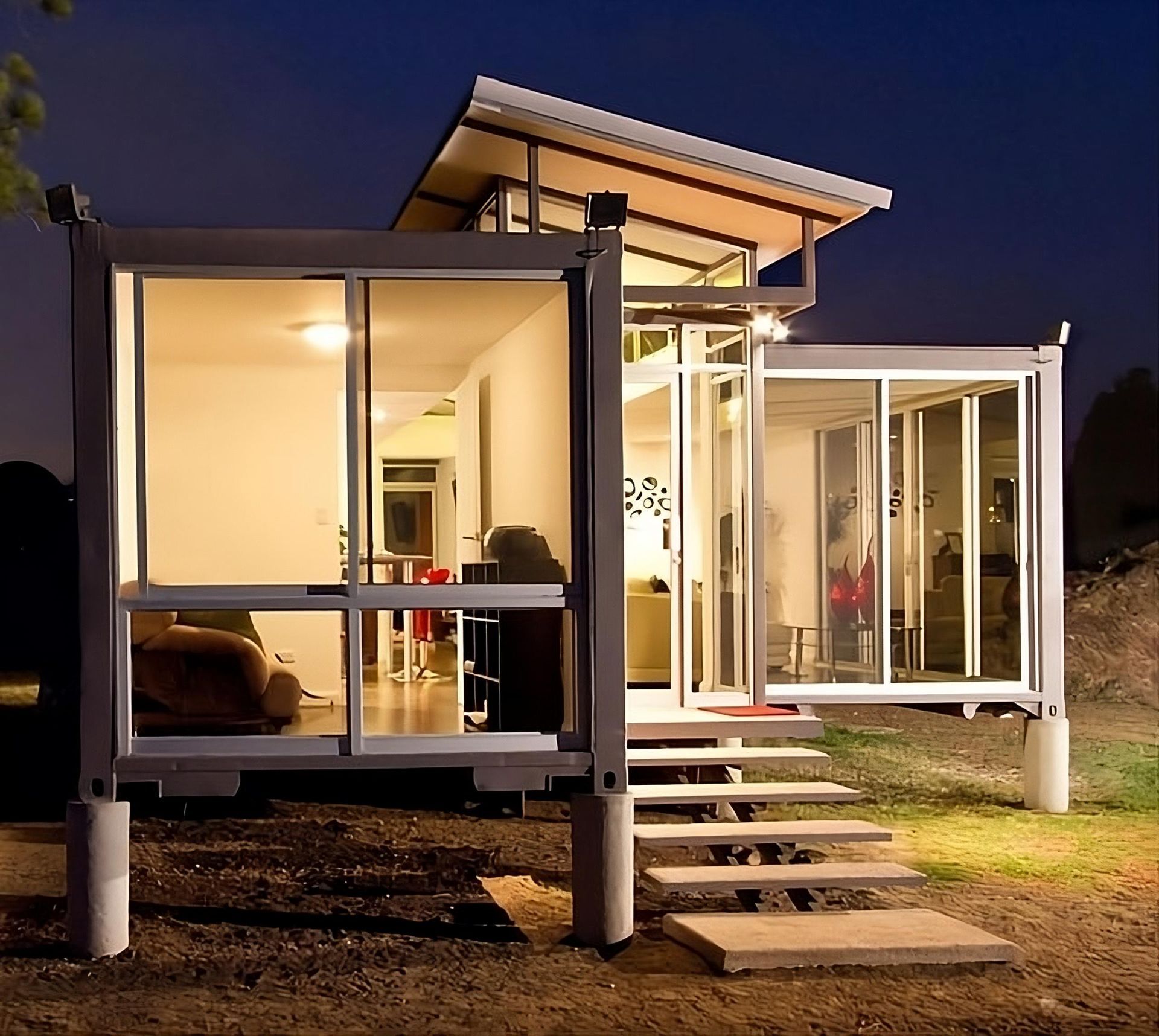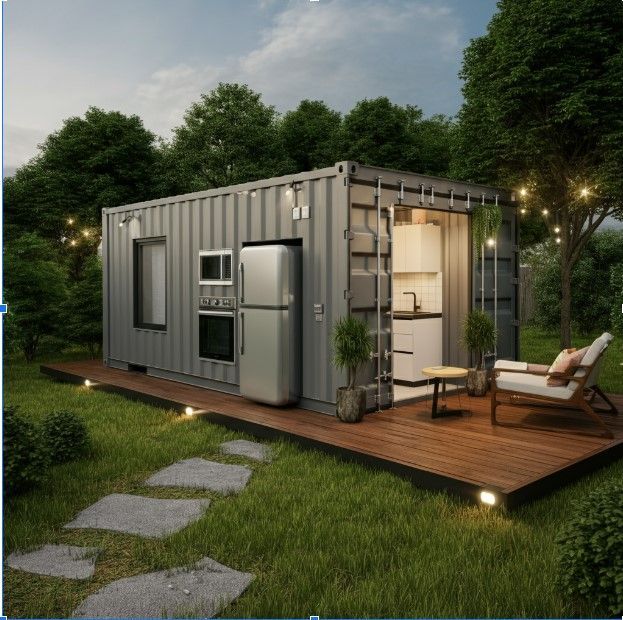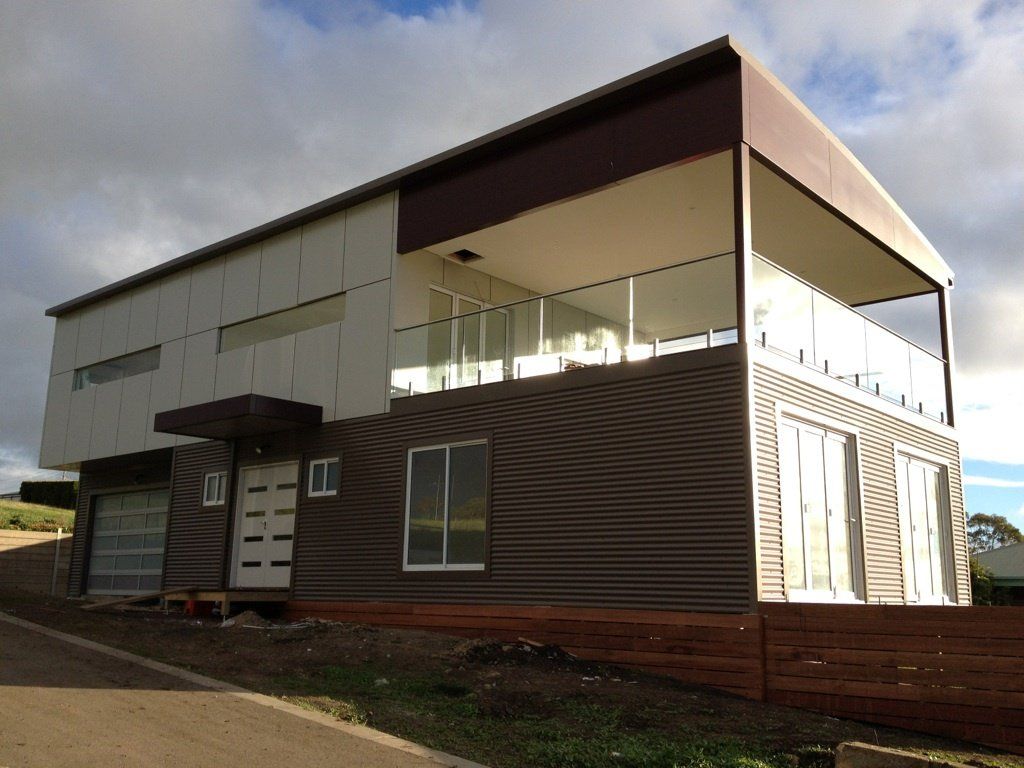Thriving with Innovation: The Lucrative World of Shipping Container Homes
In today’s dynamic real estate market, a groundbreaking housing trend is gaining momentum – shipping container homes. Combining creativity, affordability, and eco-friendliness, these homes are revolutionizing traditional construction methods.

The Concept Explored
Revolutionizing Real Estate: The Profitability of Shipping Container Homes
In the fast-paced world of business, identifying and leveraging innovative opportunities is crucial. One such opportunity is making significant strides in the real estate sector – shipping container homes.
These homes are built on the pillars of sustainability, cost-efficiency, and modern design. Not only are they reshaping the property market, but they also offer promising returns on investment.
The charm of shipping container homes lies in their unique design and affordability. Constructed from sturdy steel boxes originally used for maritime transport, these homes introduce minimalist, industrial aesthetics to residential living. They attract customers interested in stylish, eco-friendly living at a reasonable cost.
In an era where traditional housing norms are being questioned, younger generations are increasingly drawn to flexible, transportable, and sustainable living solutions. Shipping container homes fulfill these desires perfectly. Their portability allows homeowners to relocate their living spaces, breaking free from the geographical constraints of conventional homes.
Environmental Benefits
Embracing Sustainability: The Environmental Impact of Shipping Container Homes
As the market for shipping container homes expands, their potential to contribute to environmental sustainability becomes evident.
The green movement is transforming industries worldwide, including the housing market. Shipping container homes are at the forefront of this change, demonstrating large-scale recycling and repurposing while addressing the challenges of overpopulation and urbanization.
Shipping container homes are sustainable because they upcycle unused shipping containers, reducing waste and its associated environmental impacts. Unlike traditional housing, which often relies on new materials and depletes natural resources, these homes repurpose existing containers.
The benefits extend beyond materials. The modular design of shipping container homes minimizes the need for energy-intensive construction processes, lowering greenhouse gas emissions.
Additionally, these homes often feature energy-efficient designs and environmentally conscious systems, such as solar panels, recycled insulation, and rainwater harvesting, further reducing their environmental footprint.
Shipping container homes also combat urban sprawl by encouraging higher urban density, thereby reducing the environmental impacts of expanded infrastructure and increased transportation needs.
For businesses, shipping container homes offer a chance to appeal to a growing market of environmentally conscious consumers, driving broader trends toward sustainable housing.
In summary, shipping container homes play a crucial role in environmental conservation and sustainability. Their future growth and impact depend on the willingness of entrepreneurs, industry leaders, and homebuyers to embrace this innovative housing model.
Market Potential and Profitability
Exploring the Market: The Financial Promise of Shipping Container Homes
The profitability of the shipping container home industry is multifaceted, encompassing cost savings, eco-conscious shifts, and solutions to housing shortages.
Revenue generation is a key indicator of profitability. Depending on location, size, and finish, a single shipping container home can sell for $35,000 to $200,000. This range highlights the potential for significant returns, especially given the lower construction costs and faster build times.
Real estate investors can benefit by offering affordable housing solutions amidst rising living costs. Shipping container homes address this need effectively.
Moreover, businesses can diversify into niche markets, offering modular offices, pop-up shops, emergency shelters, and portable clinics, thereby expanding their client base and revenue streams.
The industry’s focus on sustainability and modern design enhances brand visibility and loyalty, attracting consumers who value eco-friendly living.
Shipping container homes also present opportunities for partnerships with tech companies. Integrating smart home technology and renewable energy solutions can make these homes more attractive, driving demand and profitability.
In conclusion, the shipping container home market offers lucrative business opportunities. Entrepreneurs, real estate investors, construction firms, and tech companies can tap into this profitable sector by providing affordable, sustainable, and innovative living solutions.
Visionaries who recognize the potential of this industry are well-positioned to lead the transformation of housing, building a sustainable future one container at a time.
Overcoming Regulatory Hurdles
Navigating Regulations: Challenges and Solutions for Shipping Container Homes
Shipping container homes offer numerous benefits, but they also face significant regulatory challenges. Converting a shipping container into a livable space involves navigating complex zoning laws and building codes.
Zoning laws vary widely, with some areas imposing strict limitations on the style, size, and location of new residential buildings. Shipping container homes often fall outside these traditional standards, requiring careful planning and architectural expertise to gain approval.
Building codes are another challenge. International Residential Code (IRC) standards and local regulations must be met, ensuring safety features like insulation, fire resistance, and ventilation are adequately addressed.
Acquiring building permits can also be difficult, with bureaucratic processes and unfamiliarity with container homes posing potential delays or denials.
However, these challenges can be overcome. A thorough understanding of local regulations, engaging with code experts, and partnering with experienced professionals can streamline the approval process.
Educating local authorities on the benefits of shipping container homes can also help secure permits. Highlighting their cost-effectiveness, efficiency, and environmental benefits can foster a positive outlook.
Strategic partnerships with architectural firms and engineers experienced in container home construction can ensure compliance with safety standards and facilitate smoother regulatory navigation.
Sourcing high-quality containers, particularly those with minimal prior use, can increase the likelihood of regulatory approval, as they are less likely to have structural issues or contain hazardous materials.
Incorporating smart home technology and renewable energy solutions can further enhance these homes, making them more appealing to regulators and consumers alike.
In summary, while regulatory challenges exist, they are surmountable with a strategic, collaborative approach. The potential of shipping container homes can be realized through innovation, partnerships, and persistence.
Future Growth and Expansion
The Path Forward: Expanding the Shipping Container Home Industry
The market for shipping container homes is ripe with opportunity. To succeed, businesses must adopt a strategic approach, leveraging partnerships and innovative solutions.
Shipping containers, known for their durability, offer secure and resilient housing options. However, this durability poses challenges in meeting safety standards and building codes.
Understanding and navigating zoning laws and building regulations is essential. Partnering with experienced architectural firms and engineers can ensure compliance and smooth the approval process.
Building strong relationships with container suppliers is crucial. Sourcing containers that meet safety standards and are suitable for habitation is foundational to the industry’s success.
Incorporating advanced technology into container homes is a strategic advantage. Smart home features and renewable energy solutions enhance comfort and appeal, making these homes attractive to modern consumers.
Innovation, strategic partnerships, and a focus on sustainability are key to overcoming challenges and driving growth in the shipping container home industry. This market offers significant potential for profitability and brand enhancement.
The future of shipping container homes is bright. These homes represent a sustainable, affordable, and stylish housing solution for today’s environmentally conscious consumers. With the right strategies, the industry is poised for substantial growth and lasting impact.
Shipping container homes are not just a trend; they are a transformative force in the housing market, offering a blend of sustainability, affordability, and modern design. By embracing this innovative approach, businesses can lead the way in building a sustainable future, one container at a time.
More Blog Articles

Container Homes
ABN: 61 152 992 099
PH: +61 02 9056 5028
Mobile: +61 0 434191600
Head Office: 81-83 Campbell St Surry Hills NSW 2010
1 Ginibi Drive Altona North Vic
Mail: PO BOX 880 ASHFIELD NSW 1800 Australia
Container Homes Designer Domain Pty. Limited.
TRADING AS:
LUXURY SHIPPING CONTAINER HOMES,
FOOD CARAVANS & RV MANUFACTURER, SHIPPING CONTAINER HOMES,
All Rights Reserved.
Designed By Jon Web Design



